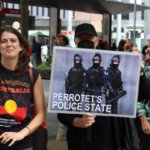How To Get an Apprehended Violence Order Dismissed in NSW

Having an application for an Apprehended Violence Order (AVO) made against you can be a stressful experience, especially if the grounds upon which it is based are exaggerated or simply untrue.
But the fact an AVO application has been made does not mean it will lead to a final order, even if a provisional AVO (sometimes called a telephone AVO) has been granted at the very start of the case or an interim AVO is made as the matter proceeds through the court system.
In fact, the applicant bears the onus of satisfying court on the balance of probabilities (that it is more likely than not) the the ‘protected person’ (who is the person seeking the AVO or for whom it is sought) has reasonable grounds to fear and in fact fears:
- That the defendant will commit a personal violence offence against them, or
- That the defendant will engage in conduct that intimidates or stalks the other person.
The applicant must also establish that the feared conduct is sufficient to warrant the making of an AVO.
The application must be dismissed if the applicant is unable to establish each of these matters.
Here’s a summary of the laws relating to AVO’s in New South Wales and how to have an AVO application dismissed.
Understanding Apprehended Violence Orders in NSW
An apprehended violence order (AVO) is a court order which is meant to protect a person from violence, threats or intimidation.
There are two general categories of AVOs in New South Wales:
- Apprehended Domestic Violence Orders (ADVO): which are intended to protect people from violence or threats of violence from someone with whom they have or had a domestic relationship.
- Apprehended Personal Violence Orders: which are to protect people from similar behaviour regardless of the relationship.
When an AVO or ADVO is first applied for, a court will generally grant an interim or short term AVO while the matter is being dealt with further. An interim AVO is similar to a full AVO in that it restricts your behaviour and the contact you have with the alleged person in need of protection, but it only lasts until the matter is officially decided.
If the Court makes an ADVO (including an interim ADVO) for an adult (over 16 years), this will include as a protected person under the ADVO, any child with whom that person has a domestic relationship.
When can a person take out an ADVO in NSW?
Under section 5 of the Crimes (Domestic and Personal Violence) Act 2007 (NSW) a person will be in a “domestic relationship” with another person if the person:
- is or has been married to the other person, or
- is or has been a de facto partner of that other person, or
- has or has had an intimate personal relationship with the other person, whether or not the intimate relationship involves or has involved a relationship of a sexual nature, or
- is living or has lived in the same household as the other person, or
- is living or has lived as a long-term resident in the same residential facility as the other person and at the same time as the other person (not being a facility that is a correctional centre within the meaning of the Crimes (Administration of Sentences) Act 1999 or a detention centre within the meaning of the Children (Detention Centres) Act 1987 ), or
- has or has had a relationship involving his or her dependence on the ongoing paid or unpaid care of the other person (subject to section 5A), or
- is or has been a relative of the other person, or
- in the case of an Aboriginal person or a Torres Strait Islander, is or has been part of the extended family or kin of the other person according to the Indigenous kinship system of the person’s culture
The process of challenging an AVO
Before an AVO gets to a defended hearing, you – or a criminal defence lawyer on your behalf – may try to have the application for an AVO dismissed on the basis of ‘representations‘ made to the police or prosecution.
Representations are a formal letter requesting the withdrawal of the AVO application and setting out the reasons for the request. In the event the ‘protected person’ does not wish for the matter to proceed, a ‘retraction letter’ can be obtained from him or her and included with the representations. The representations can also include any other relevant documents or materials, provided such disclosure would not significantly diminish the prospects of having the case dismissed in the event the representations are refused and the matter proceeds to a defended hearing.
Representations are often followed by a case conference during which you – or a defence lawyer on your behalf – will press for withdrawal.
In the event the representations are refused, and the case is not withdrawn for another reason, the matter will proceed to a ‘defended hearing’, where a magistrate hears evidence and determines whether or not to grant the application.
There will, however, be a number of ‘mentions’ (short court dates) during which you will communicate what you wish to do (ie accept or defend the AVO application) and the magistrate will make orders for the service of documents (eg statements).
‘On the date of the defended hearing, the magistrate will read the statements and each party can give evidence and be cross-examined.
Although you may represent yourself in an AVO hearing, cross-examination can be a complex and difficult task, so you should consider getting a lawyer with a proven track record of defending AVOs.
Once the magistrate has heard all the evidence, they will make an order either granting the AVO, or dismissing it. If you do not agree with the magistrate’s decision, you may appeal the matter to the District Court.
How to get an AVO dismissed
As outlined at the start of the this article, the applicant will need to prove a number of matters before an AVO can be granted to the ‘protected person’.
These includes:
- That the protected person has reasonable grounds to fear that the other person will stalk or intimidate them, or commit a ‘violence offence’ against them.
- The fear is reasonable in the circumstances, and
- The conduct that is feared justifies the issuance of an AVO
Disputing that there are ‘reasonable grounds’ for fear
Challenging the ‘reasonable grounds’ for a fear will normally require putting the other side to proof (making them prove) that any fears that may be held are genuine in the circumstances.
This will often involve disputing the applicant’s version of the events (known as grounds for complaint) during cross-examination and also putting you on the witness stand to give your version of the events.
Documentary evidence may also be presented during the proceedings, and defence witnesses can also be called to testify about anything they saw, heard or otherwise know which undermines the applicant’s claims.
Disputing that there is an actual fear
The applicant (whether the protected person or a police officer on his or her behalf) must also prove that the protected person actually fears that personal violence, intimidation or stalking will occur in the future.
Again, this can be challenged in court during cross-examination of the protected person and/or evidence from the defendant and/or defence witnesses that the protected person engaged in conduct which is inconsistent with claims of an actual fear.
Disputing that an AVO is warranted, despite any fears that are held
Over and above establishing the protected person has a fear of personal violence, intimidation or stalking, and that the fear is reasonable, the applicant must also satisfy the court that an AVO is warranted in the circumstances.
This can be challenged in circumstances where the feared conduct is relatively trivial, where an order would be unduly harsh or oppressive to the defendant, where it is not required as other measures overcome any concerns and/or where it is unlikely an order would otherwise achieve its intended objective.
Matters considered by a court
The law makes clear that when determining whether to grant an AVO, the court must consider the safety and protection of the person seeking the order and any child directly or indirectly affected by the defendant’s alleged conduct.
In deciding whether or not to grant an AVO to ensure that safety, the court is to consider:
(a) in the case of an order that would prohibit or restrict access to the defendant‘s residence–the effects and consequences on the safety and protection of the protected person and any children living or ordinarily living at the residence if an order prohibiting or restricting access to the residence is not made, and
(b) any hardship that may be caused by making or not making the order, particularly to the protected person and any children, and
(c) the accommodation needs of all relevant parties, in particular the protected person and any children, and
(d) any other relevant matter.
Proportionality of orders
The law also states that if a court decides to grant an AVO, it must only impose prohibitions and restrictions that are necessary to ensure the safety and protection of the protected person and any affected child; and nothing more.
The court must also give reasons for any prohibition or restriction that prevents the defendant from accessing a premises or other place he or she would ordinarily reside or attend.
Going to court over an AVO?
If you are you going to court to contest an AVO, call Sydney Criminal Lawyers anytime on 9261 8881 to arrange a free first conference during which one of our experienced defence lawyers will assess the case, advise you of your options and the best way forward, and fight for the optimal outcome.






